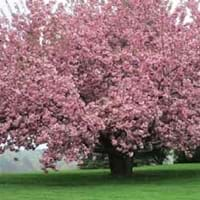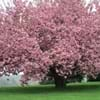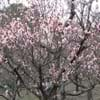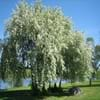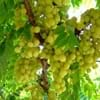Life Span
Annual and Perennial
Perennial
Type
Flowering Plants, Fruit, Tree
Tree
Origin
Not Available
Australia
Types
Not Available
Not Available
Habitat
Bushlands, gardens, Homesteads, In desert grasslands, Lowland, Shady Edge, Tropical areas
Scrubs, tussock grasslands, Upland savannas
USDA Hardiness Zone
5-8
10-11
AHS Heat Zone
Not Available
12-10
Sunset Zone
Not Available
8, 9, 12, 13, 14, 15, 16, 17, 18, 19, 20, 21, 22, 23, 24
Habit
Oval or Rounded
Upright/Erect
Flower Color
White, Pink
Lemon yellow
Flower Color Modifier
Bicolor
Bicolor
Fruit Color
Not Available
Gray Green
Leaf Color in Spring
Green
Blue Green
Leaf Color in Summer
Dark Green
Blue Green
Leaf Color in Fall
Not Available
Blue Green
Leaf Color in Winter
Not Available
Blue Green
Leaf Shape
Ovate
Long Narrow
Plant Season
Spring, Fall
Spring
Sunlight
Not Available
Full Sun
Type of Soil
Clay, Loam
Loam, Sand
The pH of Soil
Acidic, Neutral, Alkaline
Acidic, Neutral, Alkaline
Soil Drainage
Average
Well drained
Bloom Time
Summer, Late Summer, Early Fall
Spring, Late Winter
Tolerances
Not Available
Drought
Where to Plant?
Ground
Ground
How to Plant?
Seedlings, Stem Cutting
Seedlings
Plant Maintenance
Medium
Medium
Watering Requirements
Keep the ground moist but not water-logged, Requires watering in the growing season
Do not water excessively
In Summer
Lots of watering
Lots of watering
In Spring
Moderate
Moderate
In Winter
Average Water
Average Water
Soil pH
Acidic, Neutral, Alkaline
Acidic, Neutral, Alkaline
Soil Type
Clay, Loam
Loam, Sand
Soil Drainage Capacity
Average
Well drained
Sun Exposure
Full Sun, Partial Sun
Full Sun
Pruning
Prune prior to new growth, Remove deadheads, Shape and thin as needed
Remove dead or diseased plant parts, Requires little pruning
Fertilizers
Organic Manure
All-Purpose Liquid Fertilizer, No fertilizers needed
Pests and Diseases
Aphids, Mealy bugs, Mites
Insects, Root rot
Plant Tolerance
Not Available
Drought
Flower Petal Number
Semi-Double
Single
Foliage Texture
Medium
Fine
Foliage Sheen
Matte
Matte
Attracts
Not Available
Butterflies
Allergy
Not Available
Asthma, Eye irritation, Headache, Nose Irritation, Throat itching, Vomiting
Aesthetic Uses
Ornamental use, Showy Purposes
Showy Purposes
Beauty Benefits
Not Available
Not Available
Environmental Uses
Air purification
Air purification, soil stabilisation
Medicinal Uses
Not Available
Not Available
Part of Plant Used
Flowers, Fruits
Flowers, Sap, Seeds
Other Uses
Culinary use, Showy Purposes, Used as Ornamental plant
Used as a dye, Wood is used fore making tools
Used As Indoor Plant
No
No
Used As Outdoor Plant
Yes
Yes
Garden Design
Feature Plant, Shade Trees, Street Trees
Shade Trees, Street Trees
Botanical Name
PRUNUS 'Hally Jolivette'
ACACIA aneura
Common Name
Flowering Cherry, Hally Jolivette Flowering Cherry
Mulga, True Mulga
In German
Blühende Kirsch
Mulga
In Spanish
floración de la cereza
Mulga
In Greek
Άνθιση κερασιών
mulga
In Portuguese
cereja de florescência
Mulga
In Polish
Kwitnienie wiśni
Mulga
In Latin
florentem cerasis
Mulga
Phylum
Tracheophyta
Magnoliophyta
Class
Magnoliopsida
Magnoliopsida
Clade
Angiosperms, Eudicots, Rosids
Angiosperms, Eudicots, Rosids
Tribe
Not Available
Not Available
Subfamily
Amygdaloideae
Not Available
Number of Species
Not Available
Difference Between Flowering Cherry and Mulga Tree
If you are confused whether Flowering Cherry or Mulga Tree are same, here are some features about those plants to help you choose better. Many people think that these two plants have the same characteristics, but one can see Flowering Cherry and Mulga Tree Information and learn more about it. Fertilizers required for proper growth of Flowering Cherry are Organic Manure, whereas for Mulga Tree fertilizers required are All-Purpose Liquid Fertilizer and No fertilizers needed. Hence, one should know the basic difference between Flowering Cherry and Mulga Tree if you are planning to have them in your garden to enhance its beauty.
<
Flowering PlantsImportance of Flowering Cherry and Mulga Tree
Want to have the most appropriate plant for your garden? You might want to know the importance of Flowering Cherry and Mulga Tree. Basically, these two plants vary in many aspects. Compare Flowering Cherry and Mulga Tree as they differ in many characteristics such as their life, care, benefits, facts, etc. Every gardener must at least have the slightest clue about the plants he wants to plant in his garden. Compare their benefits, which differ in many ways like facts and uses. The medicinal use of Flowering Cherry is Not Available whereas of Mulga Tree is Not Available. Flowering Cherry has beauty benefits as follows: Not Available while Mulga Tree has beauty benefits as follows: Not Available.
Compare Facts of Flowering Cherry vs Mulga Tree
How to choose the best garden plant for your garden depending upon its facts? Here garden plant comparison will help you to solve this query. Compare the facts of Flowering Cherry vs Mulga Tree and know which one to choose. As garden plants have benefits and other uses, allergy is also a major drawback of plants for some people. Allergic reactions of Flowering Cherry are Not Available whereas of Mulga Tree have Asthma, Eye irritation, Headache, Nose Irritation, Throat itching and Vomiting respectively. Having a fruit bearing plant in your garden can be a plus point of your garden. Flowering Cherry has no showy fruits and Mulga Tree has no showy fruits. Also Flowering Cherry is not flowering and Mulga Tree is not flowering . You can compare Flowering Cherry and Mulga Tree facts and facts of other plants too.
